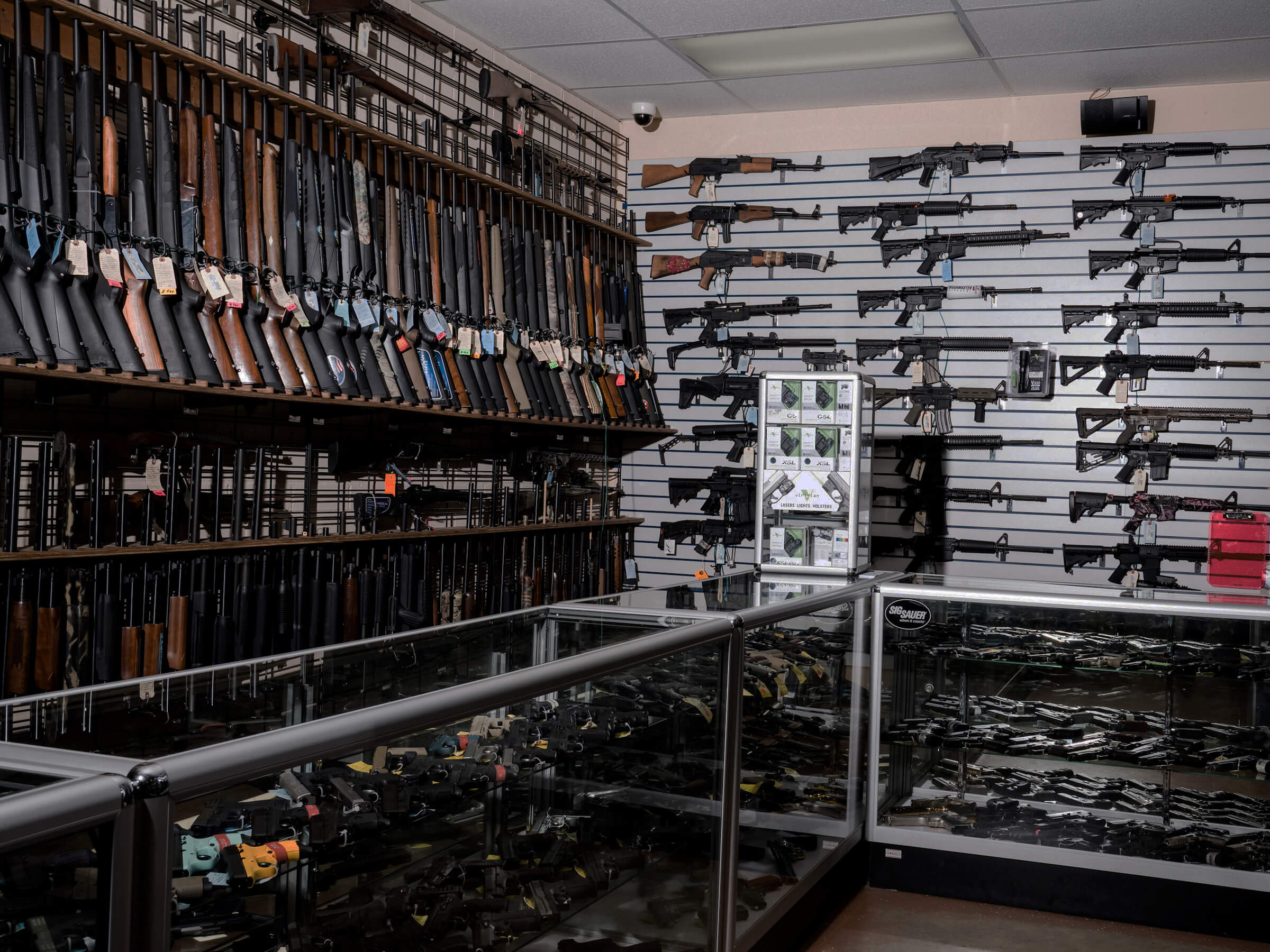Guns and America’s worsening suicide epidemic are inextricably linked. While firearms are not the most common means of suicide attempt, they are responsible for the majority of annual deaths. In 2017, the latest year for which data is available, 47,000 people committed suicide in the United States. Half of them used a gun.
As the national suicide rate continues to climb — suicide rates rose 30 percent in 25 states between 1999 and 2016 — researchers are seeking to understand what’s driving the increase. Access to firearms has long been considered a risk factor for suicide. But a new study that analyzed 18 years of national suicide data, published September 6 in the Journal of the American Medical Association’s Network Open by The Ohio State University’s Wexner Medical Center, adds another layer to the relationship, finding what researchers say is a statistically significant link between the prevalence of gun stores and increased suicide rates.
“In more urban areas, not as many homes tend to have firearms, so shops themselves could potentially increase access to some of those residents who are vulnerable to suicide,” said Danielle Steelesmith, the lead author of the study and a postdoctoral psychiatry and behavioral health fellow at Wexner.
The relationship was less pronounced in rural counties. Steelesmith said that might be because rural areas already have high rates of gun ownership. “So the shops aren’t going to change access or accessibility to firearms,” she said.
While the shops themselves weren’t linked to higher suicide rates in rural areas, gun prevalence still is. A 2017 study published in the American Journal of Public Health, for example, found that firearm use drove increased suicide rates in rural areas of Maryland.
“Rural households are more likely to own firearms, and some evidence suggests that firearm suicides drive the increased risk of suicide noted in rural areas,” the JAMA Nework Open study authors wrote.
Acknowledging that further research was needed, the authors wrote that their results nonetheless supported “means restriction as a suicide prevention strategy and call attention to projects that engage law enforcement, firearms retailers, and shooting range owners in efforts to prevent suicide.”
One such effort is Project 2025, a joint effort between the American Foundation for Suicide Prevention, the country’s largest prevention organization, and the National Shooting Sports Foundation, the gun industry’s trade group. The project’s ambitious goal is to reduce the annual suicide rate by 20 percent over the next six years. Together, the two organizations are educating gun store and gun range owners on the risk factors for suicide, and assisting them in spotting suicidal individuals and distributing prevention materials to customers.
Dr. Matthew Miller, professor of health sciences and epidemiology at Northeastern University who also co-directs the Harvard Injury Control Research Center and was not involved in the study, said the researchers made a cogent case for the potential benefits of increasing social connection, job opportunities, and, importantly, limiting access to guns.
While the new Ohio State study looks at the impact of guns on suicides in certain cases, mostly in urban counties, the broader thrust of the research was a deeper examination of the role despair and deprivation play in suicide.
During the course of the 18-year period of the new study, 453,577 Americans died by suicide, with a preponderance of suicides clustered in America’s rural counties in the West, Appalachia, and the Ozarks.
The study examined data from individuals between the ages of 25 to 64 who died by suicide between 1999 and 2016. Seventy-seven percent of victims were male and 30 percent were between the ages of 45 and 54.
The study suggested that part of the relatively higher incidences in rural counties was attributable to social factors like inadequate job opportunities, insufficient social services, and less social connectedness compared to metro areas. Although rural areas saw the largest increases in suicide rates, urban and suburban counties saw increases, as well, with rising suicide rates continuing to impact all American communities.
In many ways, the study expanded on what is already known about how America’s national health is being eroded, said Dr. Sandro Galea, an epidemiologist and dean at the Boston University School of Public Health, who was not involved with the study. “Unless we invest in the social and economic conditions that create health, our health will continue to fall short,” he cautioned.
Like other intractable public health and social problems, the fix isn’t simple. Both Galea and Steelesmith pointed to the need for improving services and opportunities for people living in resource-strapped areas of the country. Steelesmith stressed that commitment to policies promoting job creation and education would be particularly useful in rural areas, especially in conjunction with making sure people are covered by health insurance.
Quick and easy access to purchasing a firearm is another potential area for policy change. While Steelesmith noted that more research is needed on the effect that waiting periods for purchasing firearms has on suicide rates, previous research from Harvard supports the idea that many suicide attempts occur during a crisis, rather than as the result of long-term planning.
“If somebody has to have a waiting period before getting access to a gun, it might have an impact,” Steelesmith said. “Suicide is often an impulsive decision.”

